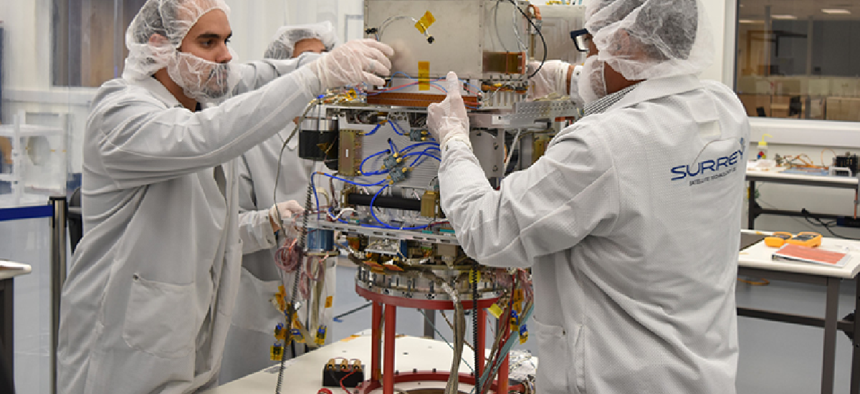NASA to test deep space atomic clock


Connecting state and local government leaders
The space agency will be conducting a year-long test of its toaster-sized deep space atomic clock, designed to make sure spacecraft can navigate accurately and autonomously on journeys to Mars and beyond.
To make sure spacecraft can navigate accurately and autonomously on journeys to Mars and beyond, NASA will be conducting a year-long test of its toaster-sized deep space atomic clock (DSAC), launching it on the SpaceX Falcon Heavy rocket June 22.
Current space navigation relies on Earth-based atomic clocks to measure the time it takes electromagnetic signals traveling at light speed from ground stations to reach a spacecraft and travel back. Using the known time and speed of light, distance can be accurately calculated.
Today's atomic clocks use the frequency of light released by specific atoms for their accurate measurements, but they are subject to magnetic fields and temperature changes – and they can be the size of a refrigerator. Spacecraft currently in low-Earth orbit receive signals from ground stations or Global Navigation Satellite Systems, which carry multiple atomic clocks, but the number crunching and back-and-forth transmission of data and instructions as spacecraft travel farther from Earth can take hours, NASA said.
Deep space travel, however, requires a much smaller and lighter clock that can also navigate when it's beyond the range of navigation satellites. The DSAC uses mercury ions in electromagnetic traps that allow for a much smaller device that is less vulnerable to external forces, making the highly accurate DSAC better suited for deep space exploration.
And accuracy is critical. A clock whose timing is off by even a single second could mean missing a landing site on Mars by miles, NASA said. During the test, NASA will use the navigation signals from U.S. GPS satellite system coupled with detailed knowledge of those satellites' orbits and clocks to monitor DSAC's performance. Researchers expect the test will show that the DSAC can maintain time accuracy to better than two nanoseconds over a day.
A spacecraft carrying its own highly accurate atomic clock could receive a signal from Earth and determine its location using an onboard navigation system. Having access to near-immediate location data will improve efficiency and allow more precise autonomous maneuvering.
NEXT STORY: FCC Votes to Stop More Suspected Robocalls





